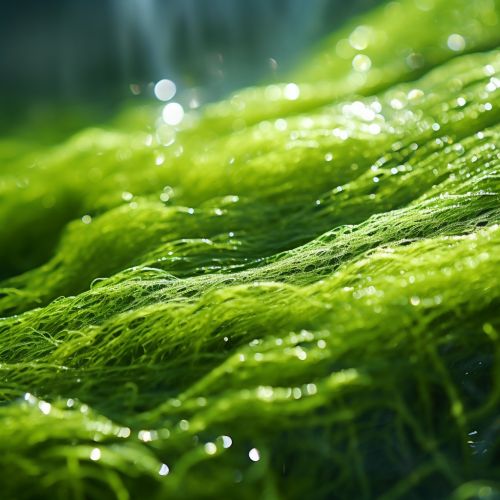Photosynthesis in Algae
Introduction
Photosynthesis in algae is a vital process that enables these aquatic organisms to convert light energy, usually from the sun, into chemical energy in the form of glucose. This process is not only fundamental to the survival of algae but also plays a crucial role in the global carbon cycle and oxygen production. Algae, which include a diverse group of photosynthetic organisms such as diatoms, cyanobacteria, and dinoflagellates, have evolved unique photosynthetic mechanisms to adapt to various aquatic environments, from freshwater to marine ecosystems.


Photosynthetic Pigments in Algae
The ability of algae to perform photosynthesis is largely attributed to their photosynthetic pigments, which absorb light energy and convert it into chemical energy. The primary photosynthetic pigments in algae are chlorophylls, which absorb light in the blue and red regions of the light spectrum. Algae possess various types of chlorophyll, including Chlorophyll a, Chlorophyll b, and Chlorophyll c, each with a unique absorption spectrum.
In addition to chlorophylls, algae also contain accessory pigments such as carotenoids and phycobiliproteins. These pigments absorb light energy in regions of the spectrum where chlorophyll absorption is weak, thereby enhancing the overall efficiency of light absorption.
The Process of Photosynthesis in Algae
The process of photosynthesis in algae involves two main stages: the light-dependent reactions and the light-independent reactions, also known as the Calvin cycle. These reactions occur within specialized structures in the algal cells called chloroplasts.
Light-Dependent Reactions
The light-dependent reactions take place in the thylakoid membranes of the chloroplasts. During these reactions, light energy absorbed by the photosynthetic pigments is used to generate ATP (adenosine triphosphate) and NADPH (nicotinamide adenine dinucleotide phosphate), which are energy-rich compounds. This process also leads to the production of oxygen as a byproduct.
Calvin Cycle
The Calvin cycle, which takes place in the stroma of the chloroplasts, utilizes the ATP and NADPH produced in the light-dependent reactions to convert carbon dioxide into glucose. This stage of photosynthesis is also known as carbon fixation.
Adaptations in Algal Photosynthesis
Algae have developed several adaptations to optimize photosynthesis under different environmental conditions. For instance, some algae can adjust the composition and concentration of their photosynthetic pigments to adapt to changes in light intensity and quality. This phenomenon, known as photoacclimation, allows algae to maintain efficient photosynthesis even under fluctuating light conditions.
Other adaptations include the development of carbon concentrating mechanisms (CCMs), which enhance the uptake and utilization of carbon dioxide, and the ability to perform photosynthesis under low light conditions, a feature common in deep-water algae.
Ecological Significance of Algal Photosynthesis
Photosynthesis in algae has significant ecological implications. Algae are primary producers in aquatic ecosystems, providing food and energy for a wide range of organisms. Through photosynthesis, algae also contribute to the global carbon cycle by absorbing carbon dioxide, a greenhouse gas, from the atmosphere.
Moreover, the oxygen produced during algal photosynthesis is vital for the survival of aerobic organisms, including humans. It is estimated that marine algae contribute about half of the global oxygen production.
